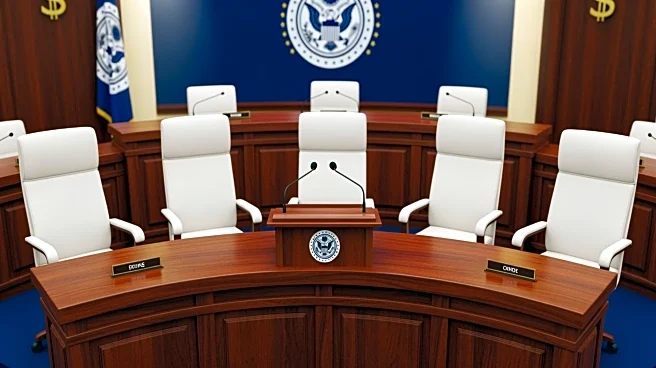What's Happening?
The U.S. job market is experiencing significant challenges, as highlighted in the latest Bureau of Labor Statistics report. In August, employers added only 22,000 jobs, indicating a stagnation in job growth
across most industries. Federal Reserve Chair Jerome Powell has expressed concerns about 'significant downside risks' in the labor market, while inflation remains above the Federal Reserve's 2% target. The ongoing government shutdown has further complicated the situation by delaying key public jobs data. Despite these challenges, the health care and social assistance sectors have reported job growth, offering some opportunities for job seekers.
Why It's Important?
The current state of the job market has broad implications for the U.S. economy and workforce. With 21 states and Washington D.C. reportedly in a recession, companies are likely to halt hiring before resorting to layoffs. This stagnation could lead to increased unemployment and economic instability. The Federal Reserve's concerns about inflation and labor market risks suggest potential policy adjustments that could impact interest rates and economic growth. The situation underscores the need for strategic economic policies to stimulate job growth and stabilize the economy.
What's Next?
As the government shutdown continues, the delay in public jobs data may hinder informed decision-making by policymakers and businesses. The Federal Reserve may consider adjusting monetary policies to address inflation and labor market concerns. Job seekers may need to focus on sectors showing growth, such as health care and social assistance, to find employment opportunities. The situation calls for close monitoring of economic indicators and potential government interventions to support the labor market.
Beyond the Headlines
The stagnation in the job market highlights the growing influence of technology and automation, as job seekers increasingly compete in an AI-driven world. This shift may necessitate workforce retraining and education to equip workers with skills relevant to emerging industries. Additionally, the economic challenges could exacerbate social inequalities, as marginalized communities may face greater barriers to employment. Addressing these issues requires comprehensive policy approaches that consider both economic and social dimensions.












